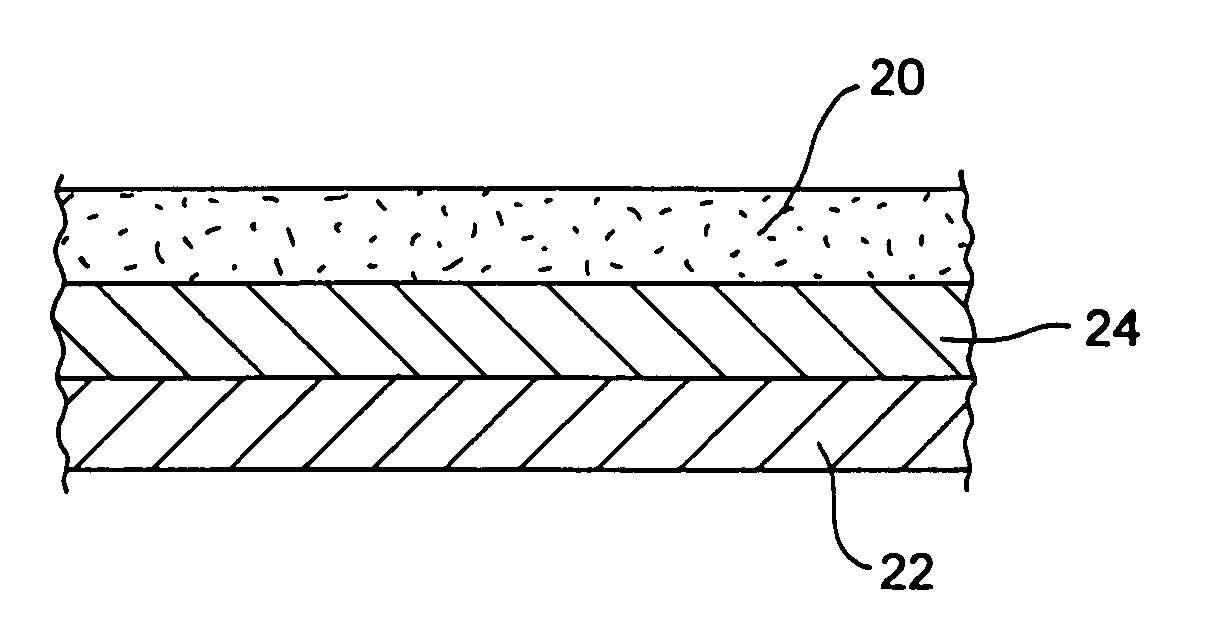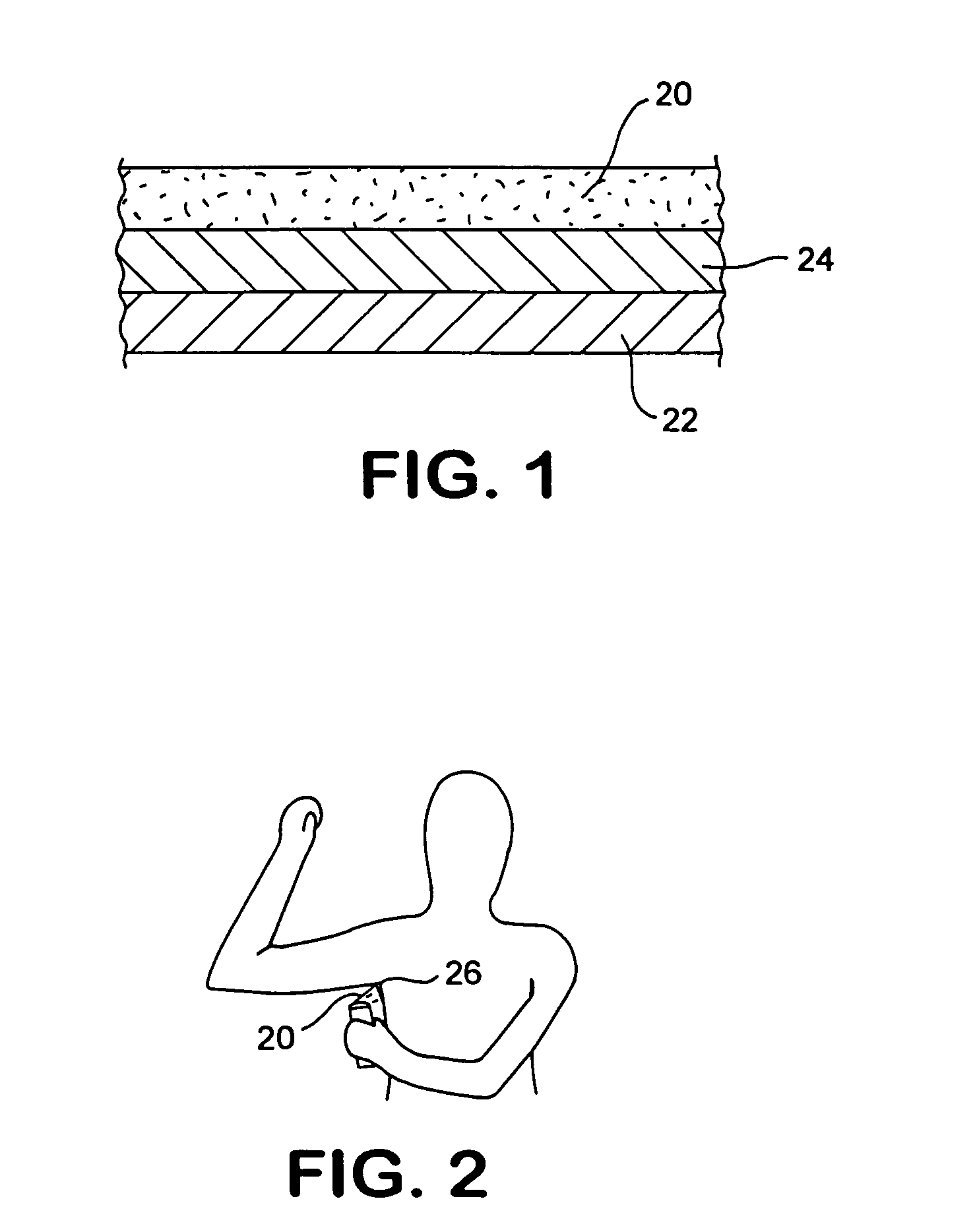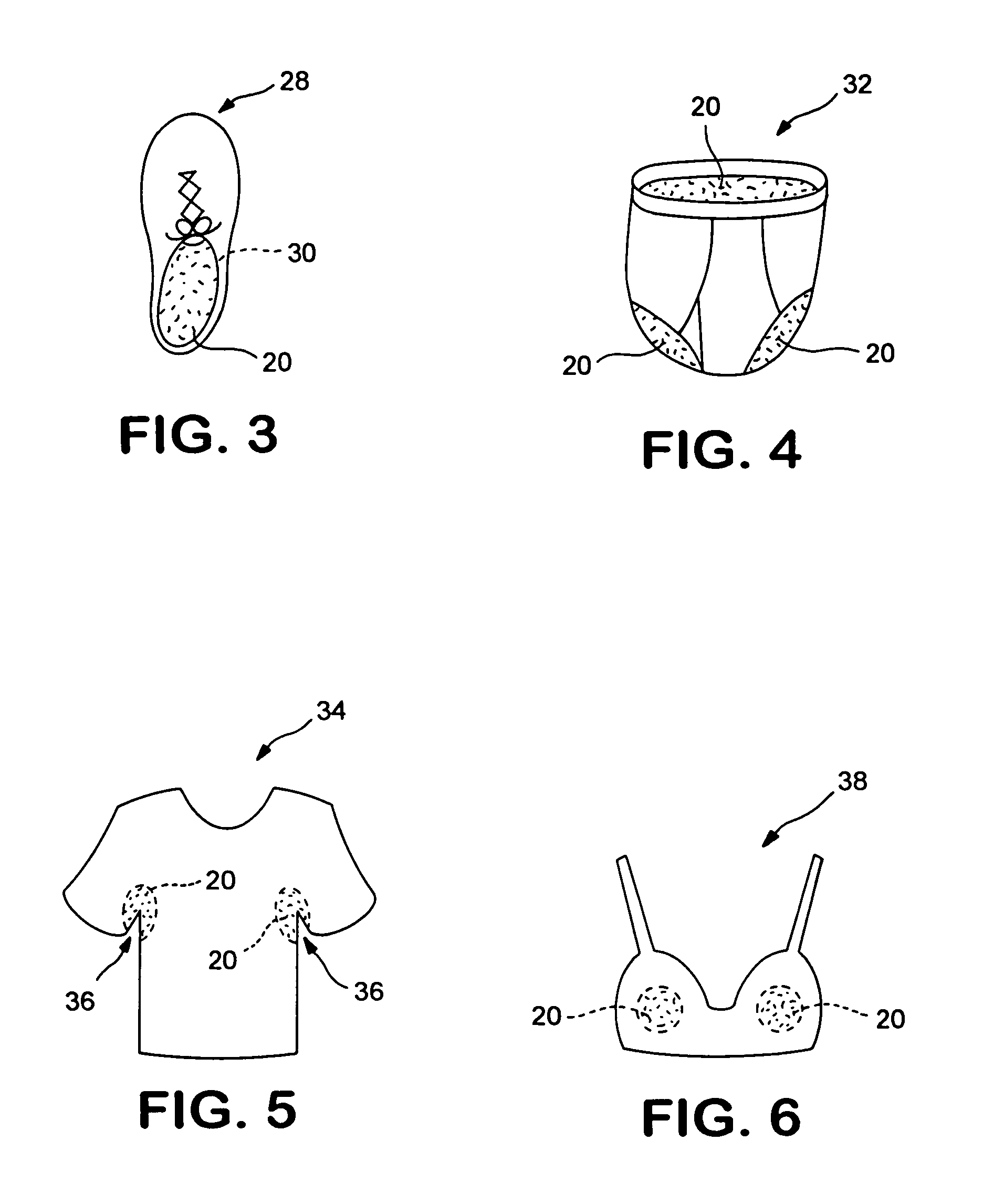Absorbent binder coating
a technology of absorbent materials and coatings, applied in the direction of synthetic resin layered products, protective garments, packaging, etc., can solve the problems of lack of absorbent properties of products exposed to moisture or humidity during use, lack of perceptible space on the article, and inability to apply an absorbent layer of material to a surfa
- Summary
- Abstract
- Description
- Claims
- Application Information
AI Technical Summary
Benefits of technology
Problems solved by technology
Method used
Image
Examples
example
[0120]The absorbent binder coating is capable of absorbing water vapor, at 22° C. and 50% relative humidity, at a rate of at least 4 weight percent per hour. Under similar conditions particulate superabsorbent absorbs water vapor at a rate of about 0.2% per hour. The rapid rate of absorbance and the capability to form coatings with the absorbent binder coating make these materials particularly suitable for humidity control products.
[0121]The coating was prepared as follows. Two monomer solutions were prepared separately. Solution No. 1 was prepared as follows. To 55.0 grams of a 75% solution of (3-acrylamidopropyl) trimethyl ammonium chloride (0.20 moles) was added 21.3 grams of deionized water, 6.0 grams of PEG 200 (molecular weight 200). Then, 0.18 grams (1.02×10−3 moles) of ascorbic acid was added to the solution. This mixture was stirred with a magnetic stir bar at about 60 rpm in a bath of water at about 23° C. until the ascorbic acid was dissolved and the mixture cooled to 23°...
PUM
| Property | Measurement | Unit |
|---|---|---|
| density | aaaaa | aaaaa |
| density | aaaaa | aaaaa |
| temperature | aaaaa | aaaaa |
Abstract
Description
Claims
Application Information
 Login to View More
Login to View More - R&D
- Intellectual Property
- Life Sciences
- Materials
- Tech Scout
- Unparalleled Data Quality
- Higher Quality Content
- 60% Fewer Hallucinations
Browse by: Latest US Patents, China's latest patents, Technical Efficacy Thesaurus, Application Domain, Technology Topic, Popular Technical Reports.
© 2025 PatSnap. All rights reserved.Legal|Privacy policy|Modern Slavery Act Transparency Statement|Sitemap|About US| Contact US: help@patsnap.com



